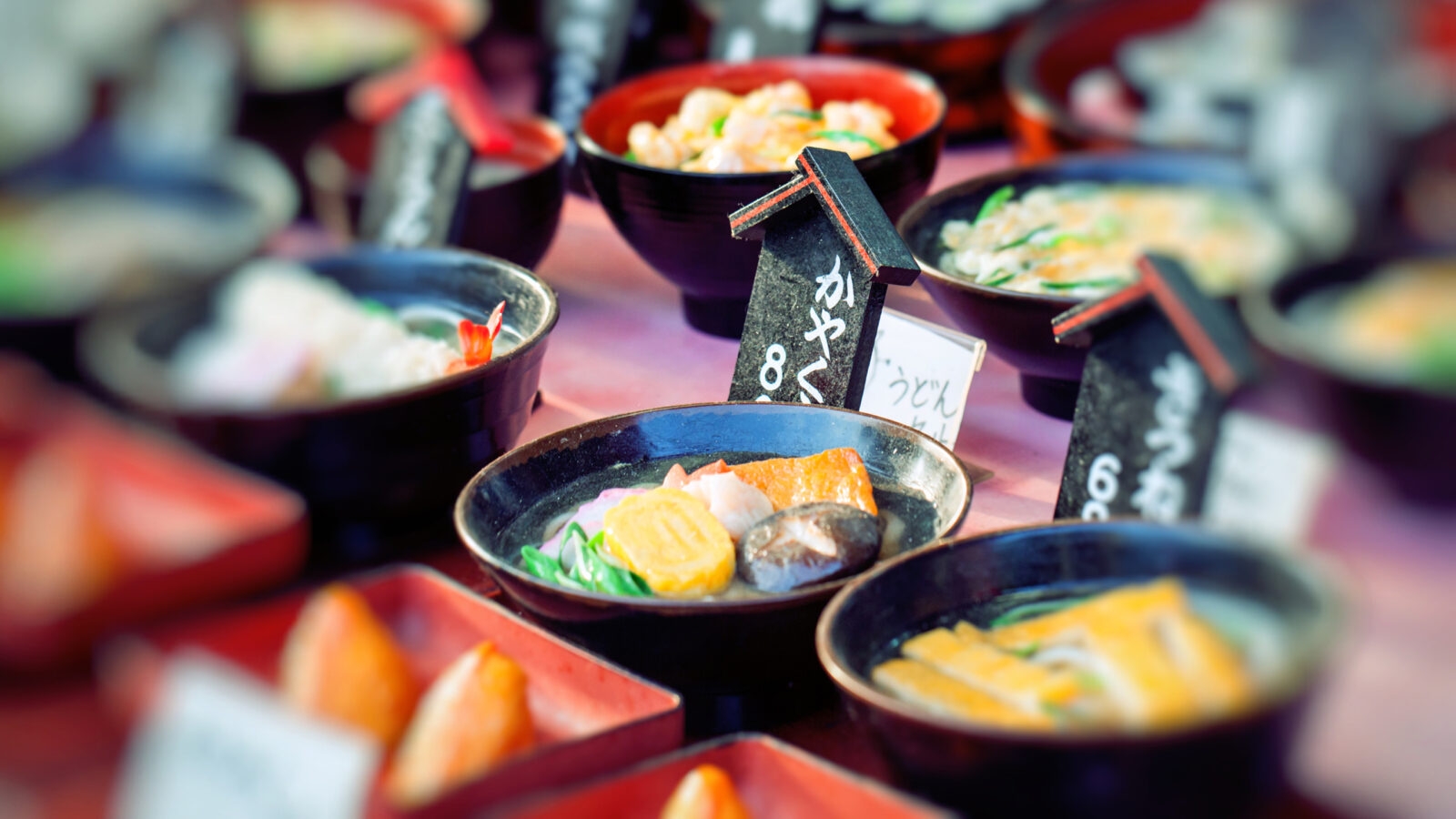Published on: February 13th, 2019
Last updated: July 27th, 2023
Japanese cuisine is nothing if not exciting. Endless types of noodles and fresh seafood are paired with traditional tea and flavourful sake to create an intoxicating fusion of tastes.
With sushi a worldwide export, Japanese food has truly made its mark on countries around the world.
From visiting the “Kitchen of Japan” Osaka to enjoying cooking classes in Kyoto, this is our guide to a foodie vacation in Japan.
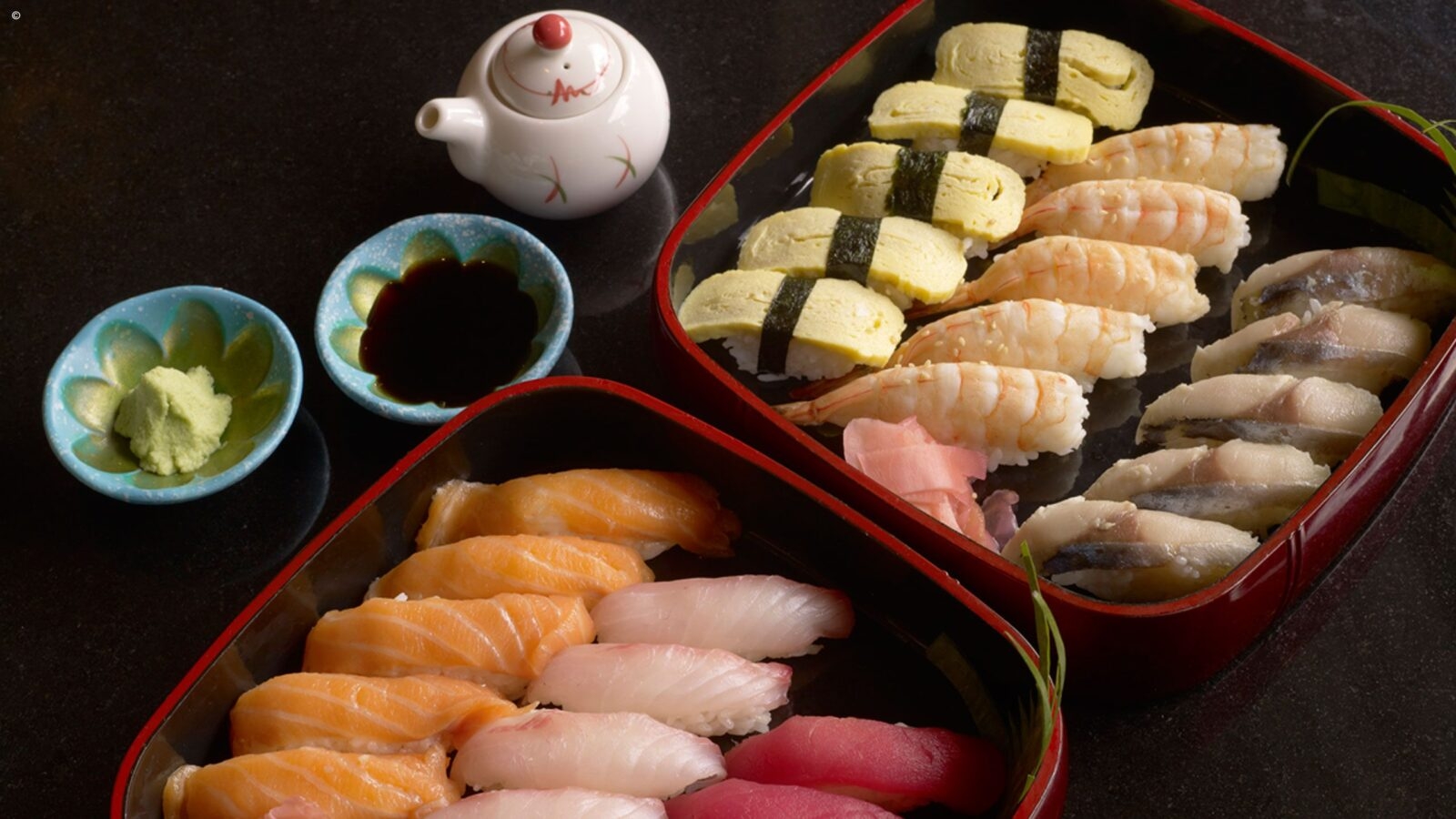
Sushi and seafood
Sushi
Today, sushi is a worldwide delicacy; but there is nothing quite like savouring the dish in the country where it was created. In Japan, sushi is not raw fish as it’s thought of in many parts of the world; technically, sashimi is the raw fish ingredient that is used in so many popular sushi dishes. The term sushi actually covers all ingredients in the dish and refers to any delicacy involving rice seasoned with vinegar.

There are many different types of sushi, which may be overwhelming at first if you’re not well acquainted with raw fish-based rice rolls. Nigiri consist of hand pressed mounds of vinegar flavoured rice topped with a slice of raw fish, while maki or temaki are the more well-known sushi rolls of rice and raw fish encased in nori seaweed. Uramaki are different to other sushi rolls in that they’re rolled ‘inside out,’ with rice rolled on the outside of the seaweed.

There are few better ways to get acquainted with the different types of sushi than a private sushi making class. On a Jacada foodie tour through Japan, travellers can indulge in an exclusive sushi making lesson led by a private chef in one of Japan’s finest restaurants. You’ll learn how to make nigiri, temaki and maki, as well as miso soup. Once you’ve worked up an appetite, you can enjoy the fruits of your labour for lunch in the delightful restaurant where you cooked up a storm.
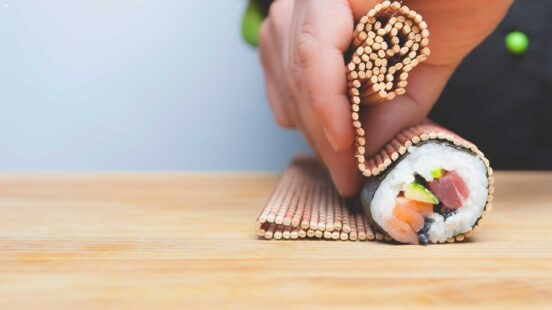
Fish markets
With sushi a Japanese staple, it’s not surprising that this fascinating country is full of fish markets. In capital Tokyo, the famed Toyosu fish market is one of the largest fish markets in the world. Importing fish and seafood from 60 countries across six continents, this market houses 85% of all the tuna consumed in Japan. The wholesale area is the centre of the action here, where fish is cut and sold to Tokyo’s many restaurants.

While you’re there, the outer-market is worth visiting too. Often overlooked by travellers, it’s a real delight for true foodies, as it’s home to the more eclectic ingredients and exotic dishes. Offering everything from kelp (a type of seaweed) to dried bonito (dried and fermented tuna), this section of Toyosu is an ideal place to stock up on Japanese ingredients.
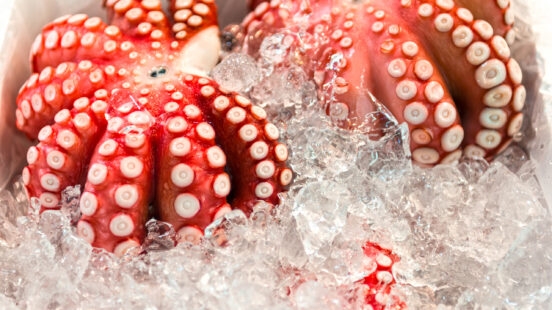
In historical Kanazawa, the vibrant Omicho fish market is affectionately known as the “Kitchen of Kanazawa.” Here, a variety of fresh fish and shellfish caught in the Sea of Japan line the market streets. A colourful network of stalls sits neatly alongside each other here; the busy market houses around 200 stalls in total. With an impressive array of seafood, Omicho is a captivating place to enjoy a spot of lunch at one of the many restaurants located inside the market.
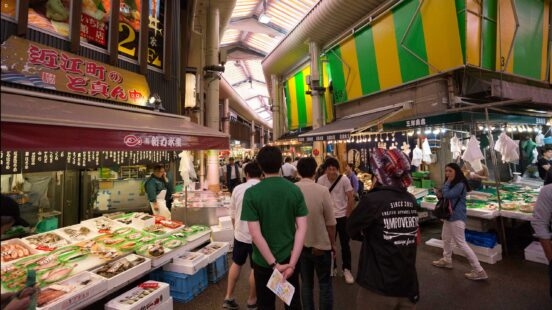

Noodles
Soba
Spaghetti-like in nature, these buckwheat noodles are a welcome addition to any Japanese dish. Due to the abundance of buckwheat in Japan, soba noodles are consumed all year round as they can be harvested regardless of the season. These noodles are versatile, and served in a myriad of ways. They’re delicious when served warm as part of a steaming hot noodle soup, or when served cold alongside a dipping sauce. They’re also great in a stir fry, and are the basis of popular dish yaki soba. In Tokyo, travellers can take part in a private soba noodle making class to really understand how these noodles make it from plant to plate.
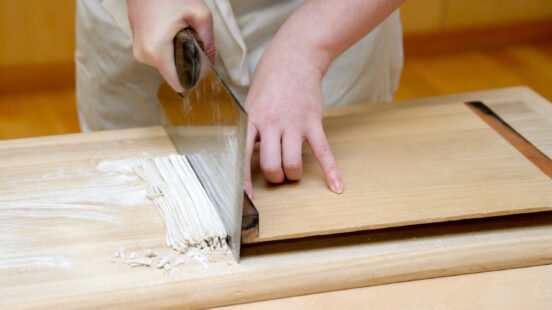
Ramen
The ultimate Japanese noodle dish, ramen, is one of Japan’s main foodie exports. Made from wheat, the noodles used in ramen are long, thin and chewy. Served in a bowl of broth, these noodles are usually coupled with slices of pork, bamboo shoots, soft boiled eggs and strips of seaweed. Ramen differs around the country though, so make sure you seek out the local ramen dish in wherever it is you’re visiting.
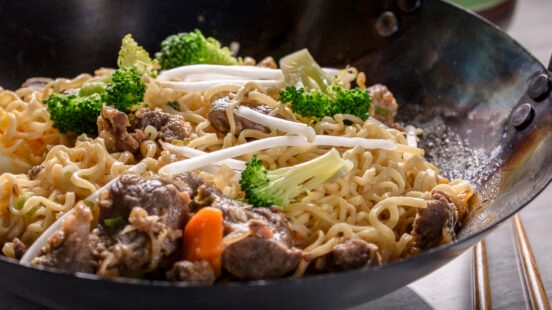
Udon
Made from wheat flour, udon noodles are distinctively thicker and whiter than other Japanese noodles. In their simplest form, udon noodles are served in a broth flavoured with dashi stock, soy sauce and mirin rice wine. Udon noodles are some of the cheapest in Japan, so they’re good for your wallet as well as your tastebuds. Other popular udon dishes include kitsune udon (served topped with fried tofu and thought to be a fox’s favourite food), tsukimi udon (topped with a fried egg and traditionally eaten during autumnal moon viewing celebrations) and curry udon (covered in fragrant Japanese curry sauce).

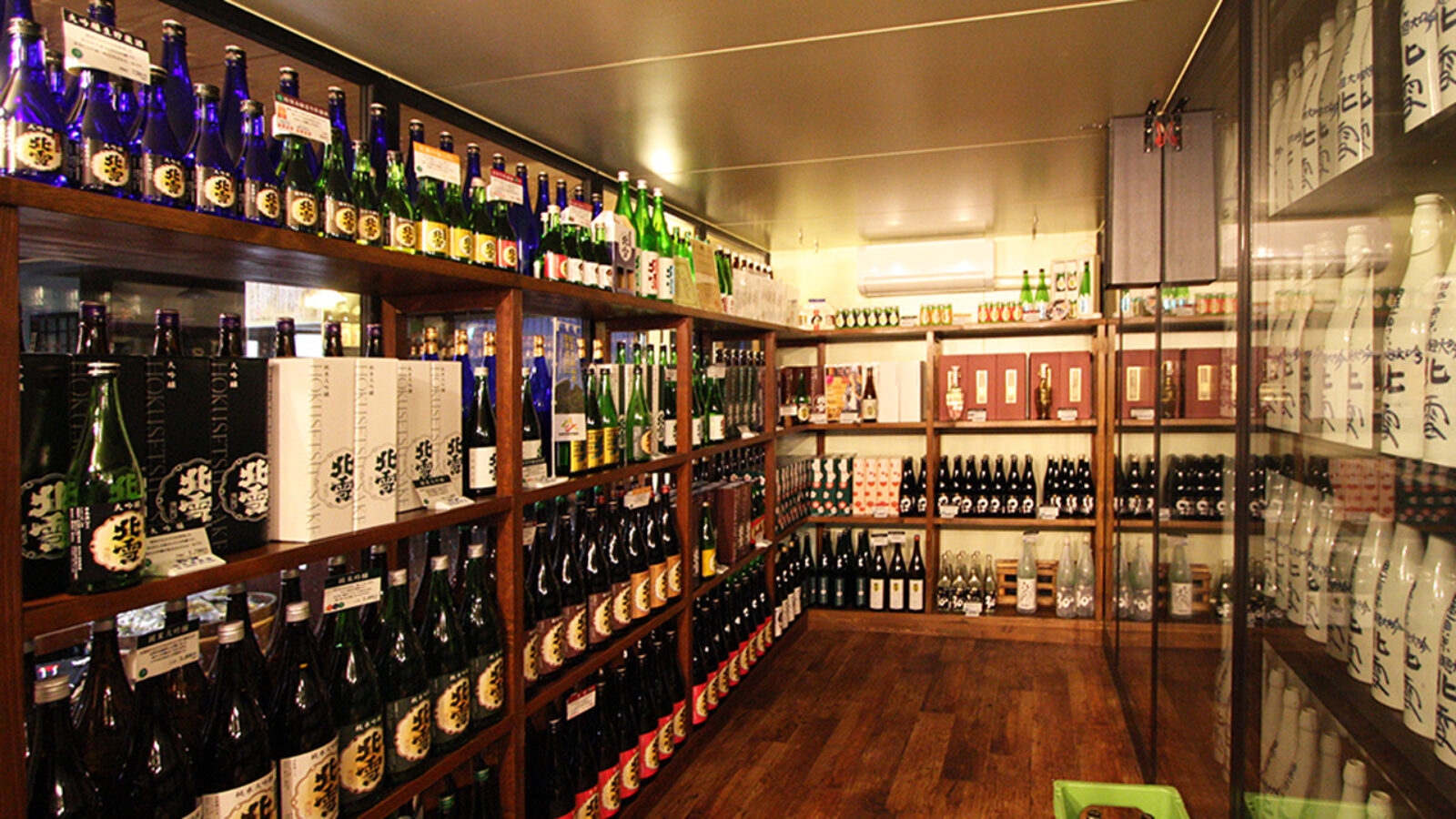
Tea and tipples
Tea
Tea was first introduced to Japan back in the 12th century, and has been ingrained into Japanese culture ever since. In Japan, the tea ceremony is an important part of the tea tradition, founded on the principles of harmony, respect, purity and tranquility. During the tea ceremony itself, traditional matcha tea is prepared ritually in a choreographed manner.
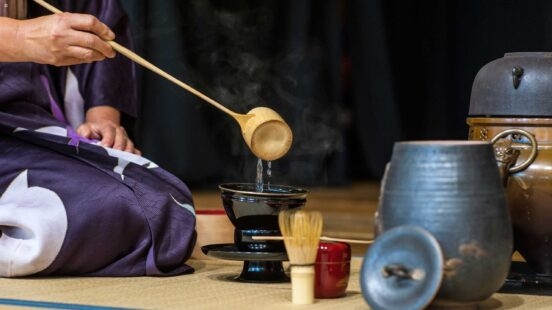
The master of the tea ceremony always pays attention to their movements and gestures, so as not to offend the guests. Dating back over a thousand years, witnessing a tea ceremony provides travellers with a fascinating glimpse into the history and culture of Japan. For an exclusive and intimate Japanese tea ceremony at a Japanese Fine Arts school, travellers can visit Tokyo’s Nihonbashi district.
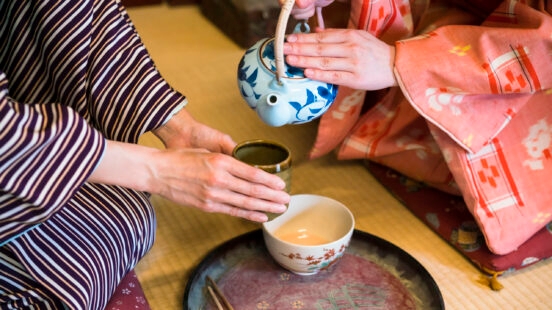
Sake
Sake, or Japanese rice wine, is Japan’s tipple of choice. Infamously strong, sake is made from fermented rice, koji (or rice malt) and water. Once filtered, the resulting sake tends to have an alcohol content of around 15 per cent. The flavour profiles are relatively mild too, ranging from light and crisp to fruity. Sake has stuck around in Japan as it compliments the oriental flavours of Japanese cuisine pretty well but the light nature of it means it pairs well with almost any meal.
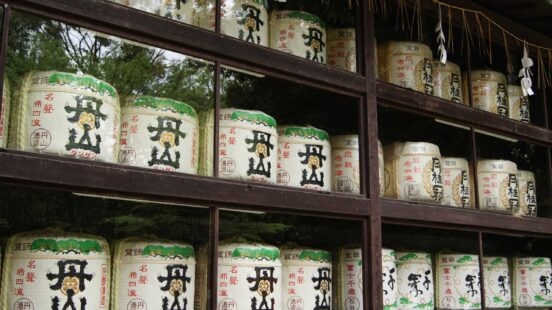
The Fushimi district of Kyoto is a great place to learn about sake, as it’s one of the oldest sake producing regions in Japan. On a tour of these sake breweries, you’ll be able to learn about the maturation process involved in sake production and have the opportunity to sample many different kinds of this favoured Japanese drink.
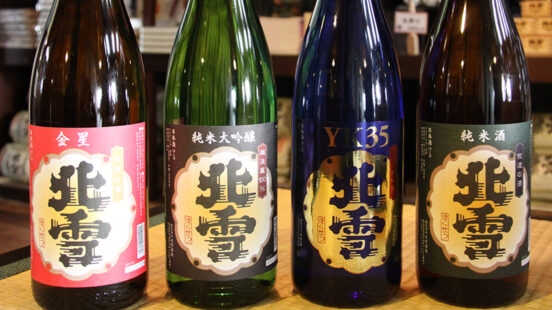
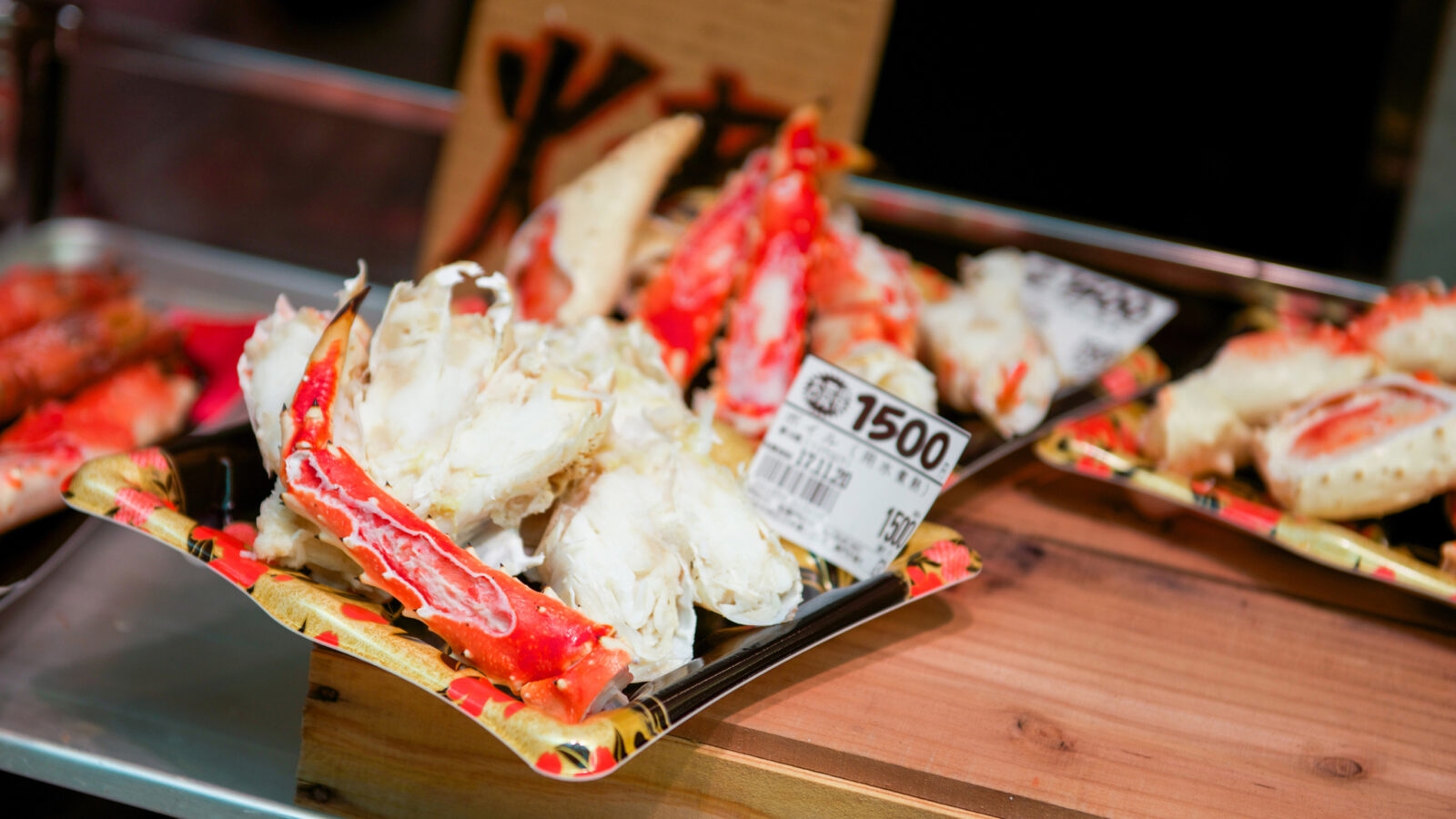
The best of the rest
Shojin Ryori
Shojin ryori is the traditional dining style of Buddhist monks in Japan, and gained widespread popularity in the country with the arrival of Buddhism in the 13th century. As Buddhists don’t believe in eating animal products, Shojin cuisine is based on soy products such as tofu and authentic Japanese countryside ingredients like mountain plants. A traditional city filled with thousands of temples, Kyoto is the perfect place to try a shojin ryori meal. Tenryu-Ji Temple is a fascinating place to enjoy a Shojin lunch with the Buddhist monks that call the temple home.

Street food staples
Japan is a country filled with markets, and as a result its cities are filled with street food markets. With vendors regularly moving between cities to sell their fare to any willing buyers, there’s plenty to choose from when it comes to Japanese street food. One of the most popular dishes is okonomiyaki – a kind of savoury grilled pancake. Prepared on a griddle, okonomiyaki is made using flour, eggs, cabbage, and either vegetables or meat. The name literally translates to ‘grilled as you like it,’ so the ingredients that go into it are largely up to the individual. Regardless of the filling, the finished dish is usually topped with dried seaweed, pickled ginger and mayonnaise.
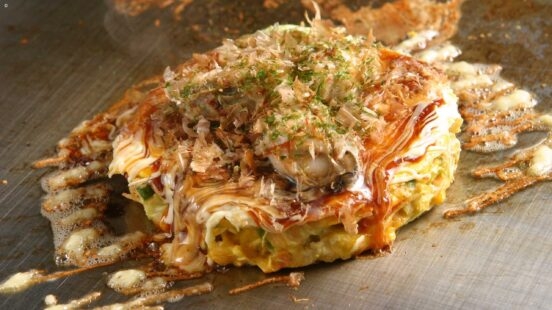
For seafood lovers, the street food delicacy of takoyaki is sure to intrigue. Literally translated as ‘fried octopus,’ takoyaki consists of fried balls of batter stuffed with octopus, spring onions, ginger and tempura pieces. Once fried, the takoyaki balls are then usually topped with more spring onions, fish shavings and mayonnaise. Although it may sound like a dish that is not for the faint hearted, takoyaki is surprisingly comforting.

Another street food classic, gyoza are found around almost every street corner. These deep fried dumplings have made it far beyond Japan, and for good reason. Typically filled with minced pork, vegetables, chives, ginger and soy sauce, these moreish dumplings make for a delicious lunch or perfect pre-dinner snack. To enjoy them like the Japanese do, serve them alongside a pot of soy sauce and garnished with spring onion.

Discover our favourite foodie trips to Japan
Feeling inspired? Our expert travel designers are always on hand to help you plan your next foodie adventure through Japan.
